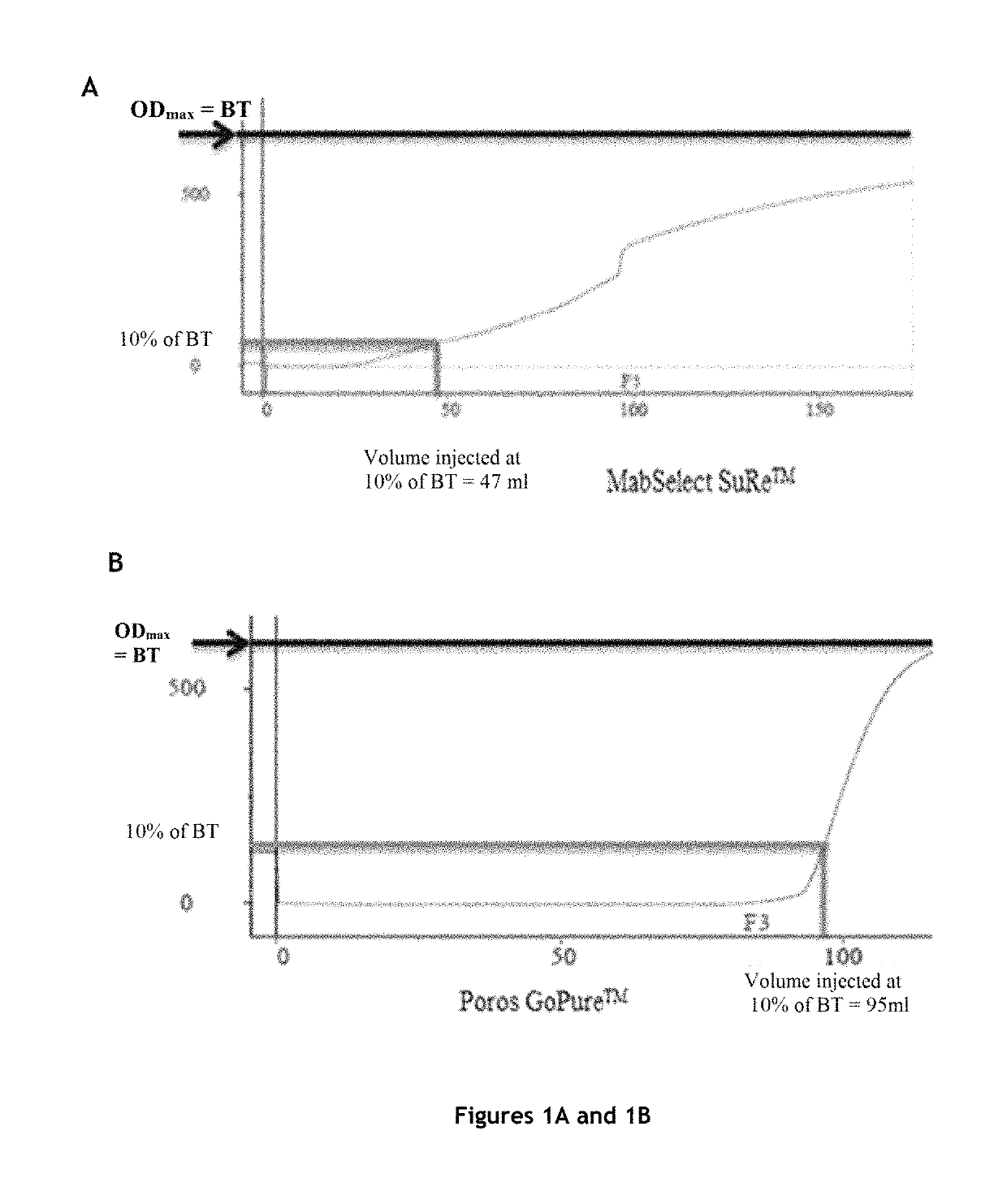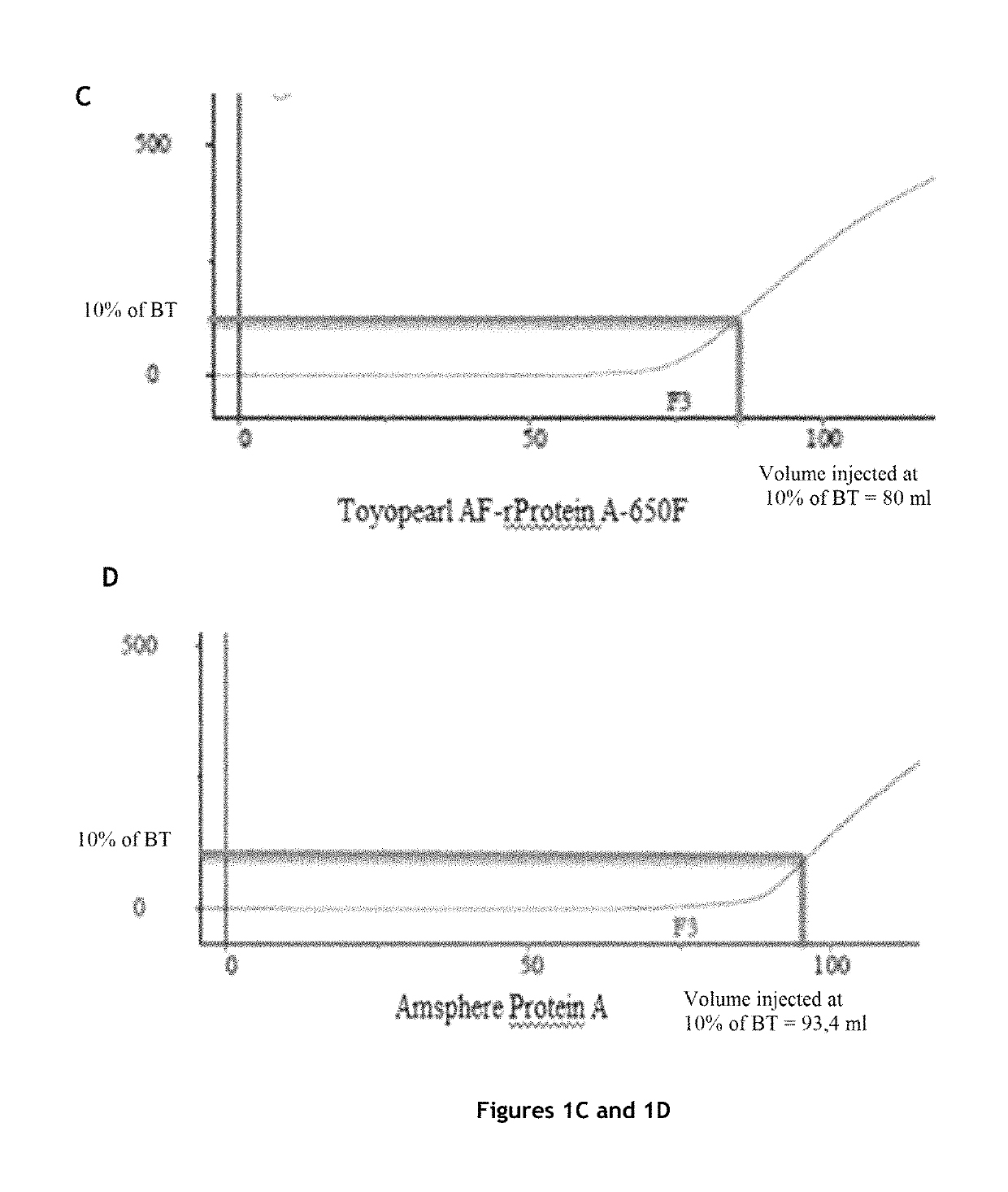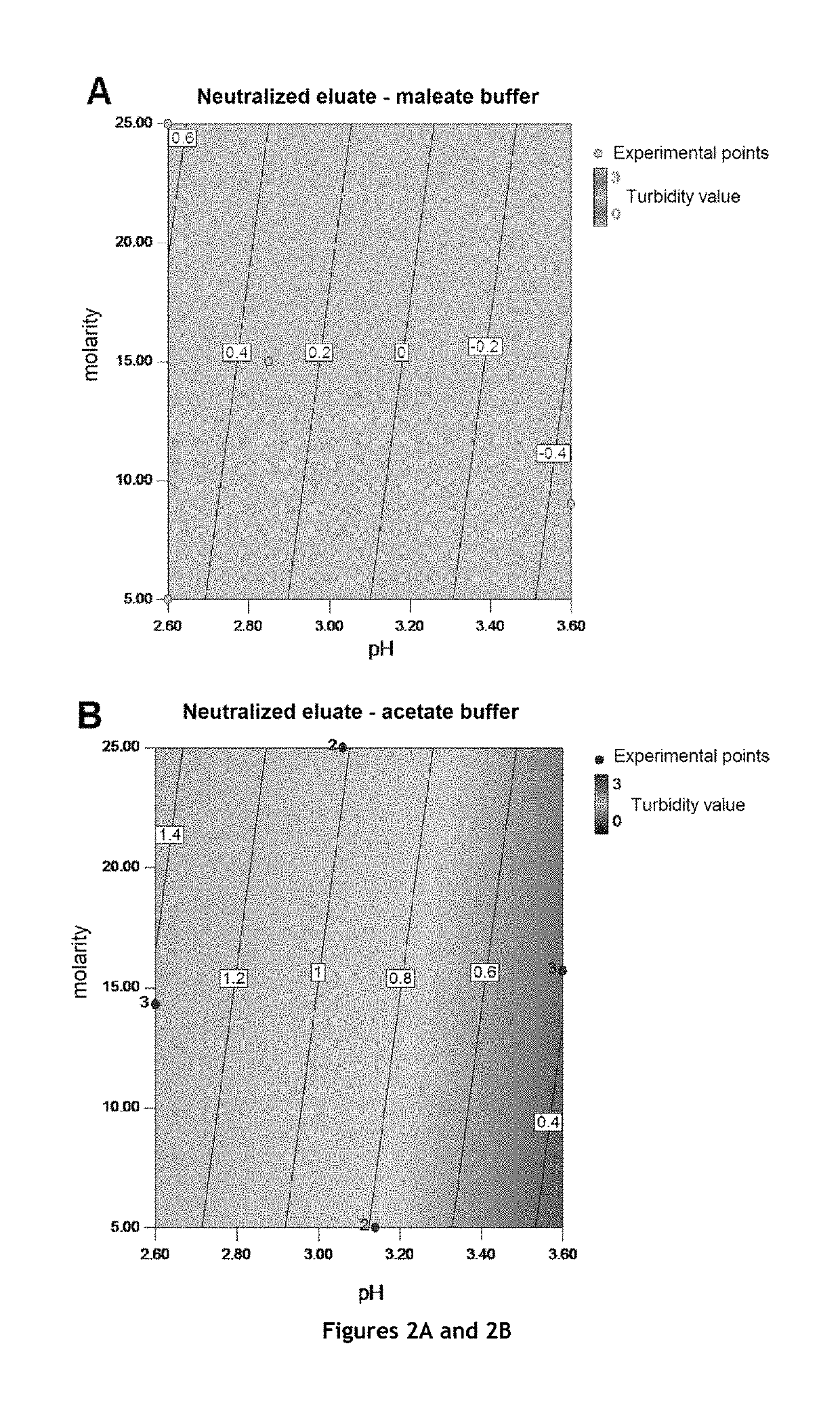Method for purification of monoclonal antibodies
a monoclonal antibody and purification method technology, applied in the field of monoclonal antibody or fusion protein purification, can solve the problems of difficult selection for skilled in the art, impose significant production costs on manufacturers, etc., and achieve the effect of maintaining the quality, purity and health safety levels of purified antibodies, reducing the cost of purification of monoclonal antibodies, and maintaining quality, purity and health safety levels
- Summary
- Abstract
- Description
- Claims
- Application Information
AI Technical Summary
Benefits of technology
Problems solved by technology
Method used
Image
Examples
example 1
ion of the Protein A Affinity Chromatography Step a)
[0153]The protein A affinity chromatography step is an essential step in antibody purification, but it is also the most expensive step of antibody purification methods.
[0154]In order to significantly reduce the cost of this step, while maintaining the purity and the quality of the product, the inventors tested various protein A affinity chromatography resins and various elution buffers, and measured the influence of the resin and the elution buffer on a certain number of parameters.
Materials and Methods
Comparison of Four Protein A Affinity Chromatography Resins
Columns Tested and Preparation
[0155]The characteristics of the columns tested are:
[0156]
TABLE 1Characteristics of the columns testedVolumeDimensionsAverageColumnLot(mL)(cm)Resinbead sizeMabSelect SuRe ™101112694.7 4.7 × 0.77highly cross-85 μmlinked agarosePoros GoPure ™1210045.655 1.2 × 5cross-linked45 μmpoly(styrene-divinylbenzene)coated withcross-linkedpolyhydroxylatedpol...
example 2
ion of the Cation-Exchange Chromatography Step c)
[0188]A virally inactivated eluate derived from step b) of the method was purified by cation-exchange chromatography on two different types of columns: an SP Sepharose column and a Capto™ S column.
Materials and Methods
Cation-Exchange Chromatography on SP Sepharose®
[0189]A virally inactivated eluate derived from step b) of the method was adjusted to 50 mOsm / kg and pH 7.2, and was injected onto an SP Sepharose® column at a load of about 30.5 g / L of gel according to the sequence:
[0190]
TABLE 7Purification sequence for a virally inactivated eluate derivedfrom step b) of the method according to the invention bycation-exchange chromatography on SP Sepharose ®Minimumvolume ofControlledDesignationSolution / Buffer usedFlow ratebufferparametersRemoval ofPurified water≤200 cm / h2CVNAstorage solutionEquilibration20 mM sodium≤200 cm / h5CVpH andphosphate buffer, pHosmolality7.2, 50 mOsm / kgInjectionInactivated product≤200 cm / hAbout 5 litersNAadjusted to...
example 3
ion of the Nanofiltration Step e)
[0218]The nanofiltration step e) is essential for guaranteeing the viral safety of the final antibody composition, particularly with respect to small non-enveloped viruses. However, this step is also very expensive, as nanofilters are very expensive products. Since each nanofilter is used only once, the inventors tested several different nanofilters in order to optimize the antibody load that could be processed at one time, so as to reduce the cost of this step.
[0219]Moreover, the advantage of using a prefilter with a larger pore size to increase the antibody load was also studied.
Materials and Methods
Comparison of Three Different Filters
Starting Product
[0220]The Mustang Q filtrate (step d)) is diluted to ⅔ using trisodium citrate dihydrate (22.05 g / L), NaCl (18.23 g / L) buffer (pH 6.5, 800 mOsm / kg), for a final volume of 555 mL. 0.2 μm filtration is then carried out on a 0.02 m2 Millipak 40 filter followed by rinsing with buffer K, for a final volume...
PUM
| Property | Measurement | Unit |
|---|---|---|
| pore size | aaaaa | aaaaa |
| diameter | aaaaa | aaaaa |
| diameter | aaaaa | aaaaa |
Abstract
Description
Claims
Application Information
 Login to View More
Login to View More - R&D
- Intellectual Property
- Life Sciences
- Materials
- Tech Scout
- Unparalleled Data Quality
- Higher Quality Content
- 60% Fewer Hallucinations
Browse by: Latest US Patents, China's latest patents, Technical Efficacy Thesaurus, Application Domain, Technology Topic, Popular Technical Reports.
© 2025 PatSnap. All rights reserved.Legal|Privacy policy|Modern Slavery Act Transparency Statement|Sitemap|About US| Contact US: help@patsnap.com



